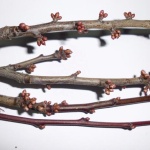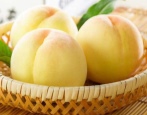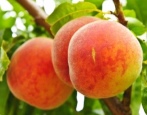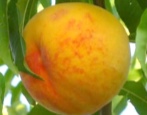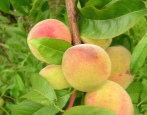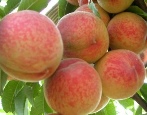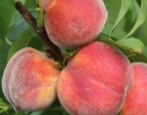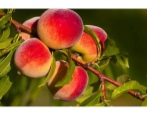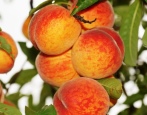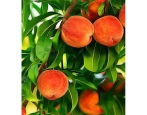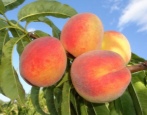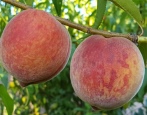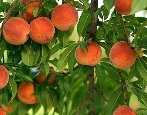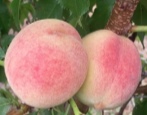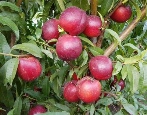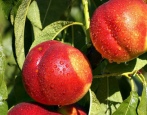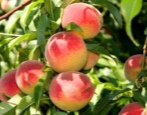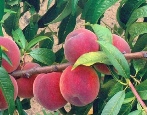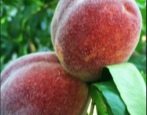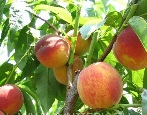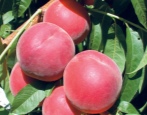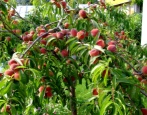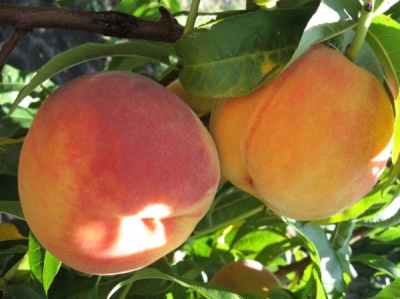
- Authors: USA, Michigan
- Appeared when crossing: Halehaven x Culhaven
- Year of approval: 1992
- Growth type: medium-sized
- Ripening period: early
- Self-fertility: self-fertile
- Appointment: table, for fresh consumption, for canning, for making juices
- Yield: high
- Transportability: good
- Early maturity: begins to bear fruit in the 3-4th year after planting
Peach trees are gaining immense popularity among summer residents and farmers. Thanks to the variety of varieties, the tree can be grown in almost any climatic zone. For the central regions, the American-bred Redhaven peach will be a suitable variety.
Breeding history
Redhaven peach is a popular American variety. Scientists from Michigan State University, led by breeder Dr. Stanley Johnston, worked on the culture. The parental forms of the peach are Halehaven and Culhaven. The variety was announced in 1940, becoming the most popular variety in the United States. Peach was approved for use in Russia in 1992 after entering the State Register. Recommended for growing a tree in the North Caucasus region.
Description of the variety
The American peach is a medium-sized tree with a spherical or flat-round crown shape, a strong spreading of thickened branches of a brown-burgundy color and moderate foliage with large emerald green leaves. A healthy tree grows up to 5 meters in height, while the crown diameter reaches 8-10 m. A distinctive characteristic of the tree is the cracking of the brown-brown bark. Conical buds grow slightly away from the trunk.
Peach blooms in late April - early May. The crown of the tree is literally covered with single five-petal flowers of bright pink color, emitting a very sweet aroma. Ovaries are formed on annual branches. The lifespan of the peach tree is about 40 years.
Fruit characteristics
Redhaven is a medium-fruited peach variety. On average, fruits grow to a weight of 110-130, sometimes 170 grams. The shape of the fruit is round-oval with slightly flattened edges. Ripe peach has a beautiful color - yellow-amber, diluted with burgundy blush, covering the entire sunny side of the fruit. The skin of the fruit is dense, but not hard, like velvet with a delicate edge.
The purpose of fruits is universal - they are eaten fresh, used in cooking (baked goods, compotes), canned, processed into jams, preserves, marmalades, juices. The harvested crop tolerates long-distance transportation well. Fresh peaches are stored for several days. You can extend the shelf life if you store fruits in a closed container in the refrigerator - up to 7-8 days. Fruit softening is slow.
Taste qualities
The taste of the American peach is memorable, magical. The yellow-reddish flesh is characterized by a delicate, slightly fibrous, fleshy and very juicy consistency. The taste is harmonious - sweetness without sourness and sweetness, it goes well with a bright fruity aroma. A small reddish stone is easily separated from the peach pulp. The abdominal suture of the fetus is superficial, strong. The pulp contains almost 10% sugars and less than 1% acids.In addition, it is worth noting the average calorie content of the fruit - 39 kcal per 100 g.
Ripening and fruiting
The Redhaven peach has an early ripening period. The first harvest can be observed 3-4 years after planting. The fruiting period of the tree is extended - it lasts 2-3 weeks. This is due to the fact that the fruits do not ripen together. Often, harvesting work continues for a month. The first fruits can be tasted in the last week of July, and the mass ripening of fruits occurs in early August.
Yield
The yield indicators for the peach tree are decent. It is characteristic that the yield increases over the years. On average, 40-50 kg of fruit are removed from 1 tree per season. A five-year-old tree produces 10-12 kg of fruit, and a 15-year-old tree - up to 100 kg.
Self-fertility and the need for pollination
Good self-fertility is one of the advantages of this variety, which allows you to plant only this variety of peach in the garden. According to experienced farmers, planting donor trees on the site can significantly increase yield indicators - up to 20-40%. For the American peach, the best pollinating crops are: Gift of Kiev, Golden Jubilee, Ambassador of Peace, in Memory of Shevchenko, Lyubimets.
Growing and care
Planting of a peach tree is carried out in the spring - from mid to late April, when the air temperature does not drop below + 12 ... 15 degrees, and night frosts are left behind. The most viable are annual seedlings with developed rhizomes. The distance between plantings should be 3-4 meters. It is recommended to choose a site that is flat, not in lowlands, with deep groundwater. It is optimal to plant a tree in the southern part of the garden, where the sun shines all day.
Intensive cultivation of peach of American selection consists of a standard chain of measures: watering, fertilizing, plowing the soil, forming the crown, removing dry and damaged branches, mulching the near-stem zone, preventing diseases and preparing for winter.
The main watering, which is consistent with precipitation, is carried out at the time of flowering, formation and pouring of fruits. Water is poured into a dug trench around the trunk, not at the root. Fertilizers are applied three times per season - in spring, summer and autumn. Pruning is carried out annually, preferably in early spring. The tree needs formative, sanitary, rejuvenating pruning. Protection from insects and rodents will be provided by whitewashing the trunk, as well as wrapping with a fine-mesh net.
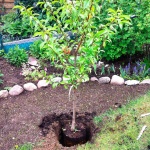
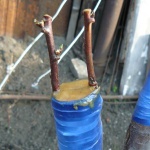
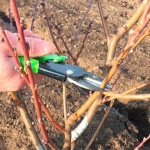
Frost resistance and the need for shelter
The frost resistance of the variety is assessed as below average, although the tree easily survives a drop in temperature to -20 ... 25 degrees. The peach growing in the south does not need shelter for the winter. In addition, the tree is not afraid of return frosts in spring.
Disease and pest resistance
One of the disadvantages of this fruit crop is weak immunity. The peach tree has little resistance to foliage curl, and is also susceptible to diseases such as powdery mildew and clotterosporia.In addition, the tree is often attacked by insect pests - moth, aphid, weevil.
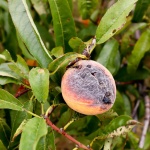
Requirements for soil and climatic conditions
Redhaven peach is a thermophilic crop that absolutely calmly survives prolonged drought and heat, therefore it can be grown in steppe conditions with an arid climate. The peach does not like excess moisture, drafts and gusty winds.
The tree is most productive, growing on fertile, breathing and moist soils with a low acidity level. It is the loams that are considered optimally suitable.
